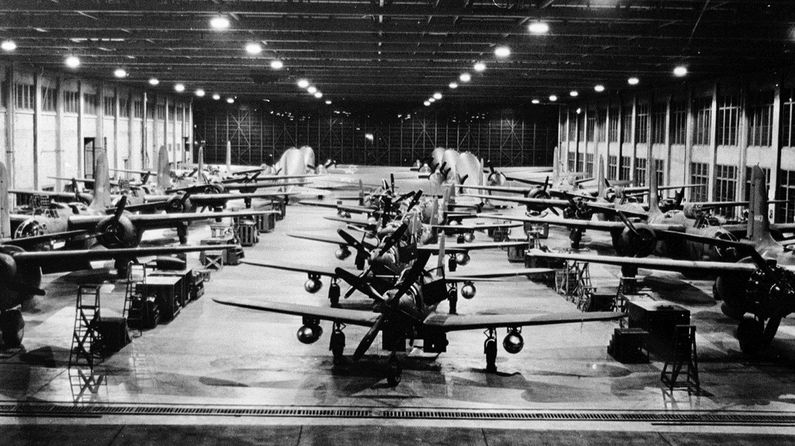Malmstrom Air Force Base
|
World War II(Text adapted from USAF Fact Sheets) Construction began on Great Falls Army Air Base on May 9, 1942. The base was informally known as East Base since the 7th Ferrying Group was stationed at the municipal airport on Gore Hill. Its mission was to establish an air route between Great Falls and Ladd Field in Fairbanks, Alaska, as part of the United States Lend-Lease Program that supplied the Soviet Union with aircraft and supplies needed to fight the German Army. 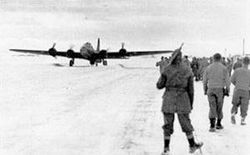 Great Falls Army Air Base was assigned to the 2nd Air Force and the first B-17 Flying Fortress landed on 30 Nov 1942. Four bombardment groups, the 2nd, 385th, 390th, and 401st, trained at Great Falls from November 1942 to October 1943. The group's headquarters and one of its four squadrons were stationed in Great Falls with the other squadrons stationed at Cut Bank AAF, Glasgow AAF, and Lewiston AAF. The B-17 training program ended in October 1943 and Great Falls Army Air Field was transferred to the Air Transport Command.
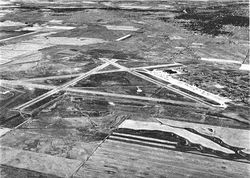 The Lend-Lease Program continued which included P-39, C-47, B-25, and A-20 aircraft. B-25 Mitchell Bombers arrived by rail and were assembled on base, others were flown in by both military and Women Air Force Service Pilots (WASPs). These aircraft were later flown by U.S. pilots by way of the Alaskan-Siberian Route (ALSIB) through Canada to Fairbanks, Alaska, and transferred to Russian pilots who in turn flew them into Siberia. Aircraft shipments to the Soviet Union stopped in September 1945, when World War II ended, with approximately 8,000 aircraft having been processed in a 21-month period.
Post World War IIAfter the end of the war, Great Falls Army Airfield served as a port of embarkation for the movement of personnel and supplies to Alaska and the northern Pacific. A reserve training unit was established here for the 4th Air Force from 10 Oct 1946, to March 6 Mar 1947. In September of 1947, the United States Air Force became a separate service and the base's name changed to Great Falls Air Force Base. Cold War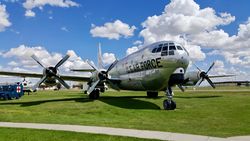 The "Cold War" heated up when the Soviet Union closed all land travel between West Germany and West Berlin. On 25 Jun 1948 "Operation Vittles," the strategic airlift of supplies to Berlin's 2 million inhabitants, was initiated. Officials selected Great Falls AFB as the only replacement aircrew training site for Berlin Airlift-bound C-54s. Using radio beacons, Great Falls AFB was transformed to resemble Tempelhof Airport in Berlin, Germany. Hundreds of pilots and flight engineers, many of whom were recalled to active duty, were qualified on the C-54 aircraft and on flight procedures to and from Berlin by practicing on-ground mock-ups and flying simulated airlift missions. Later, the 1701st Air Transport Wing's primary mission was the routing and scheduling of flights throughout the Pacific Ocean region and in support of allied forces in the Korean War. The Military Air Transport Service (MATS) reopened the C-54 Flight Training School in May 1950, one month before the Korean War began.
Air Defense RoleGreat Falls AFB played a major role in the North American Air Defense mission. The 29th Air Division activated at Great Falls AFB in March 1951, bringing with them fighter-interceptor squadrons, aircraft control and warning squadron, and ground observer detachments. The 29th Fighter-Interceptor Squadron activated in 1953 and remained at Great Falls until 1968. 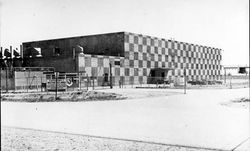 With the creation of the North American Aerospace Defense Command (NORAD) in 1957, Malmstrom AFB was responsible for the air defense of a region covering the northern mountain and plains states of North America. The force included four fighter-interceptor squadrons and radar sites stretching from the Rocky Mountains and across the Dakotas. Malmstrom AFB served as the NORAD alternate command post, active until 1983 when the SAGE System was deactivated.
 Besides the fighter-interceptor squadrons, the air defense facilities at Malmstrom AFB included the Malmstrom Manual Direction Center P-83 (1951-1969), the Malmstrom Air Force Base Radar Site SM-147 (1957-1969) and the massive Malmstrom SAGE Direction Center DC-20 (1960-1969). With the closure of the SAGE System in 1983 the SAGE System direction centers were closed and the radar site was turned over to the FAA to operate as a joint-use site. The FAA radar site later moved to the off-base Bootlegger Ridge FAA Radar Site.
Missile Mission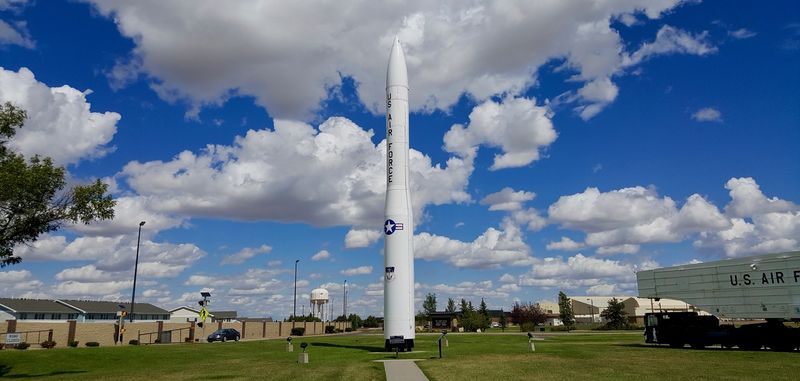 With the declining manned aircraft threat from the Soviet Union and the new threat from Soviet intercontinental ballistic missiles, the mission at Malmstrom AFB changed from a defensive posture to a retaliatory posture using hardened missile systems to assure a devastating response to any attack. The 341st Bombardment Wing was re-designated the 341st Strategic Missile Wing and activated at Malmstrom AFB on 1 Jul 1961. Construction of the wing's first missile launch facilities began in March 1961 and was completed in July 1962. The first Minuteman I intercontinental ballistic missile (ICBM) arrived on base by rail on 23 Jul 1962. Just four days after the missile's arrival, Launch Facility Alpha-09 gained the title of the first Minuteman missile site. 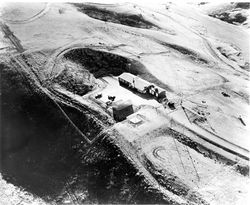 In 1962, the missiles assigned to the nation's first Minuteman ICBM wing would play a major role in the Cuban Missile Crisis. On 27 Oct 1962, the first of the launch facilities, with Alpha-06 first, was placed on "strategic alert" after it was discovered the Soviet Union had placed nuclear missiles in Cuba. The following day, Soviet Premier Khrushchev agreed to recall Russian ships en route to Cuba and withdraw nuclear-capable missiles. The Soviets eventually removed all their missiles from Cuba. On 3 Jul 1963, following 27 months of construction, the wing and its three squadrons became fully operational. Each squadron controlled 50 missiles, bringing the total wing strength to 150 Minuteman I missiles. Two years later, construction began on the fourth and final minuteman squadron. This squadron was equipped with the more modern Minuteman II missile. On 5 May 1967, the squadron was declared fully operational. Malmstrom's missile field was then the largest in the United States, covering 23,500 square miles. Throughout the 1970s and 1980s, the wing's missiles remained on alert and underwent extensive weapons systems upgrades. In 1991, the Strategic Arms Reduction Treaty (START) was officially formalized. President Bush took all Minuteman II missiles, bombers, and tankers off alert status on 28 Sept 1991. In November 1991, the J-03 Launch Facility became the first to have its missile removed. It took three and a half years to remove the last Minuteman II from Kilo-11 on 10 Aug 1995. As Minuteman II missiles were removed, a new program called Rivet Add was launched, modifying the 150 Minuteman II launch facilities to accommodate the newer Minuteman III. In the early 1990s, host responsibilities changed several times due to massive Air Force restructuring programs. On 15 Jan 1992, Malmstrom's host responsibilities were again transferred, this time to the Air Mobility Command. On 1 Jun 1992, the Air Force restructured its major commands, inactivating SAC and replacing it with Air Combat Command (ACC). In July 1993 responsibility for the ICBM force was transferred to Air Force Space Command. In 1995, the Rapid Execution and Combat Targeting (REACT) signaled the first complete overhaul of the Minuteman III's command and control systems. In addition, to REACT, the wing completed the transfer of 120 Minuteman III ICBMs from Grand Forks AFB to Malmstrom AFB. This brought the wing strength to 200 Minuteman Ills on alert status. The wing's Minuteman Missiles have also undergone improvements and upgrades. An extensive life-extension program is underway to keep the missiles safe, secure, and reliable well into the 21st century. These major programs include: replacement of the aging guidance system, remanufacture of the solid propellant rocket motors, replacement of standby power systems, repair of launch facilities, and installation of updated, survivable communications equipment.
Current StatusActive Air Force Base. The base's runway was closed to aircraft operations on 31 Dec 1996. Helicopter operations continue at Malmstrom in support of the base's missile mission. The 341st Missile Wing reports directly to Twentieth Air Force at Francis E. Warren Air Force Base, Wyoming. It is part of Global Strike Command headquartered at Barksdale Air Force Base, Louisiana.
See Also:
Sources: Links: Fortification ID:
Visited: 12 Aug 2016
| ||||||||||||||||||||||
